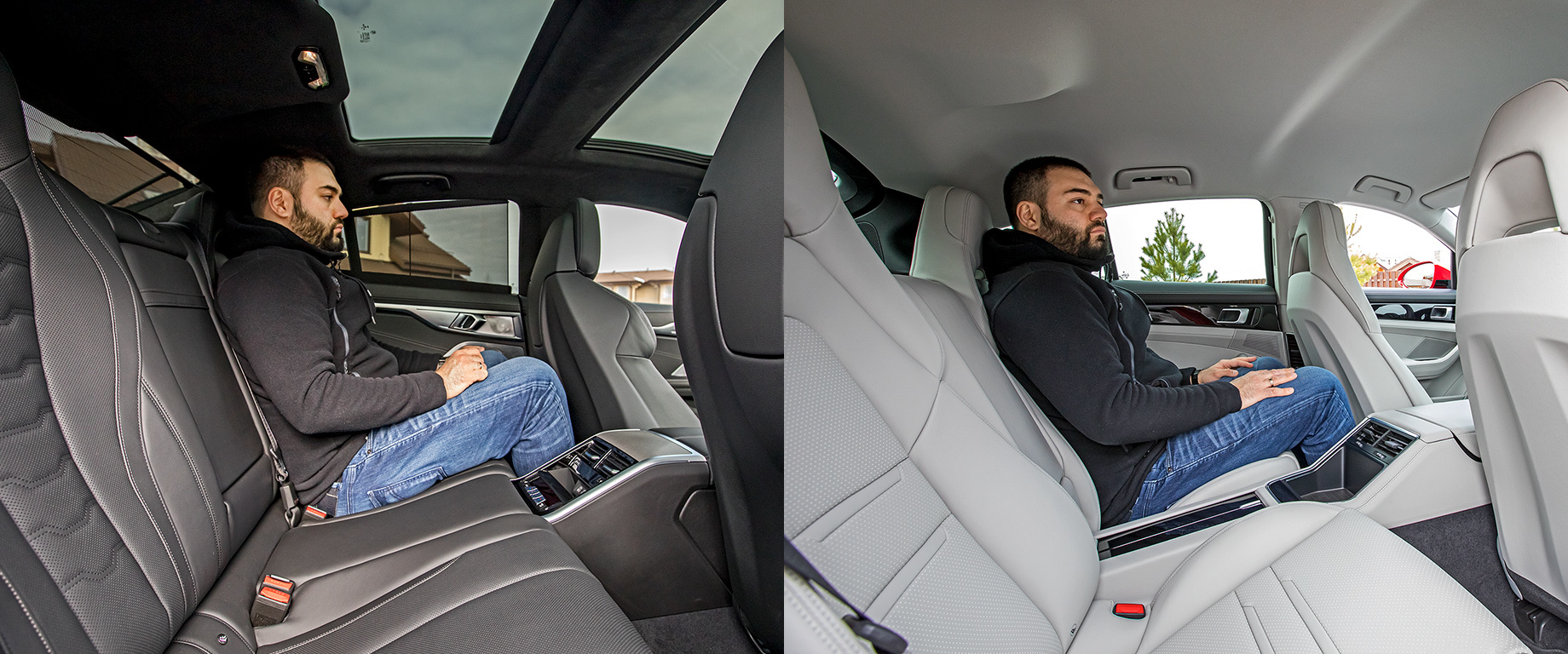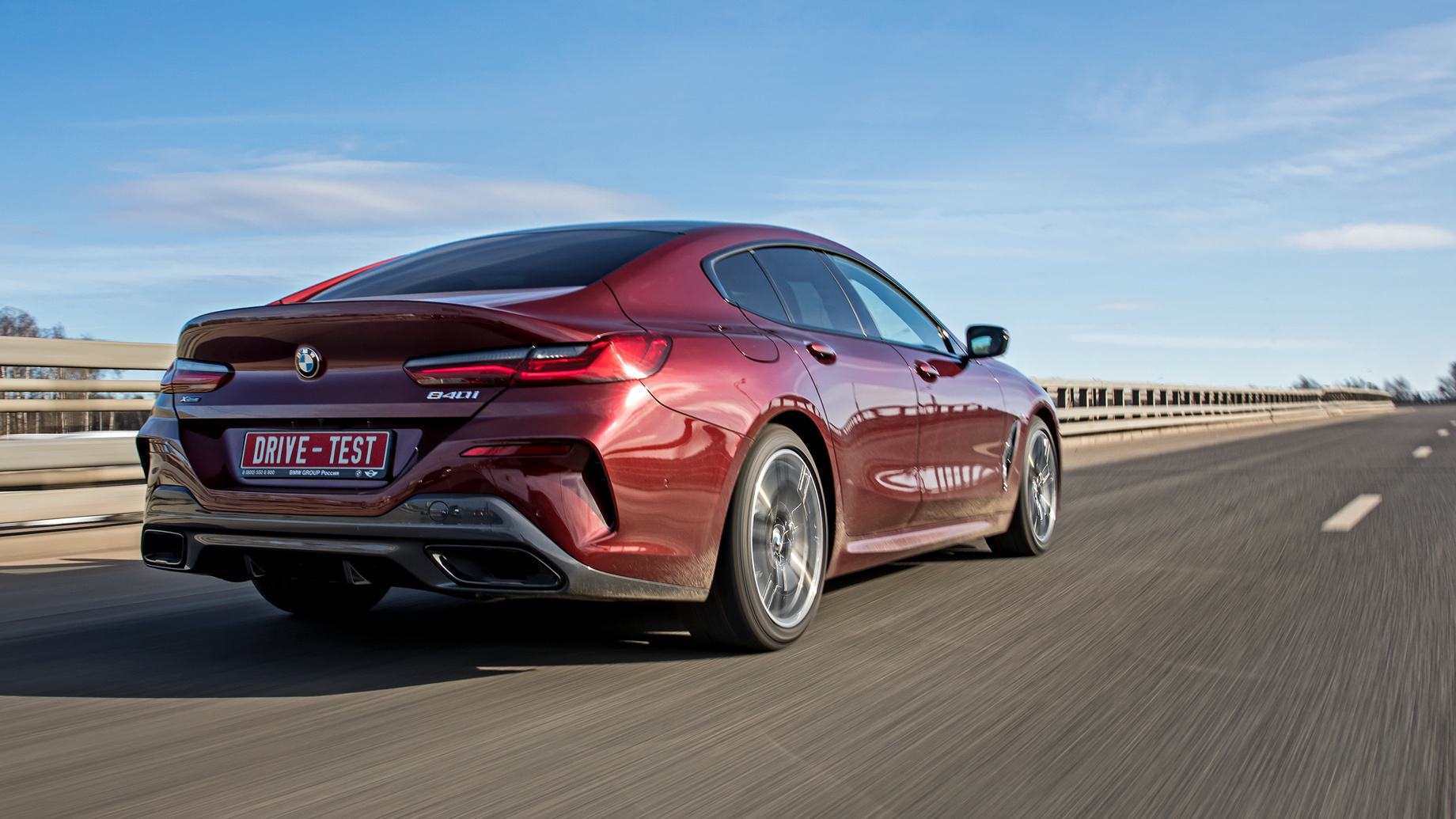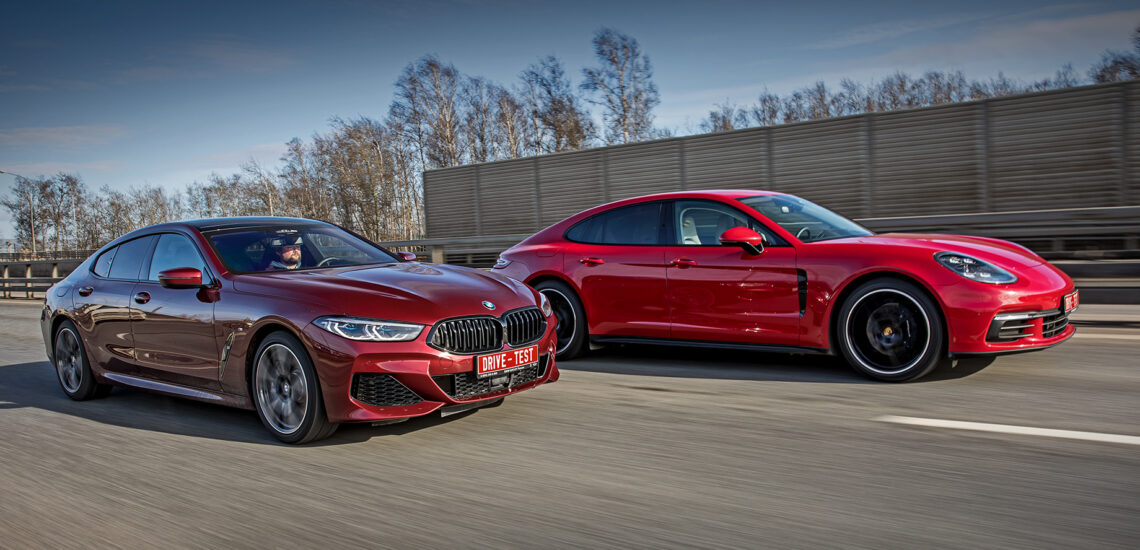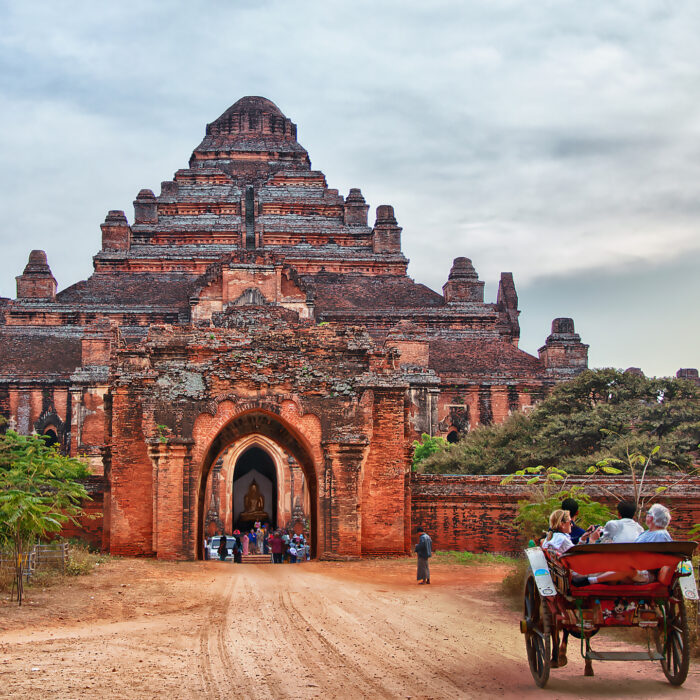Whatever the summer season turns out to be, it will be hampered for the Porsche Panamera 4 hatchback by the appearance of a new competitor. Sales of the BMW 840i xDrive Gran Coupe sedan have started — and look what an impressive pair we got! 16-feet bodies delight the eye with athletic forms (by the way, would you notice the difference in their type if you didn’t know about it?). Cars are also very similar technically: three-liter turbocharged six-cylinder engines produce 330-340 horsepower, and all-wheel drive allows you to spend about five seconds to accelerate to 60 miles/h. And you can’t approach any of the cars without a large amount of money..
However, the standard BMW equipment is richer. Porsche charges extra money even for the rear-view camera (albeit washed) or the adjustment of the front seats lumbar support. If you equalize the number of advantages in the equipment, the Panamera 4 will be noticeably more expensive. And it is the latter that turned out to be more expensive, although the test configuration doesn’t include either a basic for BMW full-control chassis, adaptive stabilizers, or multi-circuit seats. Well, all the more interesting to get acquainted with the Porsche without embellishment.

Both cars do without chrome in trim, and the pure classicism of the Porsche looks richer, weightier than the slightly outrageous Bavarian playfulness. To understand whether a car is beautiful or not, I often try to imagine how it will look on the pages of classic car magazines in 30 years. It’s easy to see the Panamera there, but the Gran Coupe — at a stretch.
It’s not that the digital interior of the Porsche has been created for centuries, but the BMW interior, in my opinion, will become obsolete sooner. Although both the thick steering wheel and the overall architectural massiveness are long-lasting solutions. Here and now, the “Eighth” wins due to a more nimble multimedia system, which both is controlled more logically (including a universal joystick) and pleases with additional functions such as reversing along its trajectory. Although in winter, matters are complicated by the rear camera without a cleaning system.
Both cockpits are richly equipped, but the BMW’s glass details on the tunnel (optional) affront the eye. While the Panamera surprises with flimsy Volkswagen understeering switches. Deflectors in the back row are also cheap: they seem to be unified with the Golf. But you feel freer in the Porsche, as if you breathe easier. A through horizontal of the front panel works on the feeling of space, besides the roof is higher.
It also makes life much easier for those who are behind as well. The Porsche’s second row individual seats, as in the BMW, are installed very low. But they themselves are better and provide a more comfortable position. Feet can be put under the front seat lowered to the limit. The “Eighth” doesn’t allow this. Needless to say, the configuration of the Panamera is preferable for cargo transportation. There is even a hint of the underfloor space in the trunk of the hatchback, although there is also no place to put a donut tire there.

You literally fall behind the wheel in either of the two cars: seat cushions barely rise above sill in the fully lowered position. The BMW doesn’t offer to pay extra for seats with a lot of adjustments, but fixed and rather dense lateral hip support. The column is electrically driven, not like the Porsche. And yet, putting on the Panamera with basic seats is a little easier. They are also tenacious, and a more hospitable profile makes it easier to go through a long journey.
It is more pleasant to start the Porsche engine by rotating the “key”. In the BMW, a starter button is lost among its own kind on the central tunnel. The Panamera has a base engine — and this is our first acquaintance with it. It vibrates slightly at idle. And aggressively roars with the exhaust even standing still; and the sound was moved backwards, from where the engine of decent Porsches is supposed to give voice. I don’t have the heart to call the basic hatch slow. In addition, the duo of the V-shaped six-cylinder 3.0 (450 N-m) and the eight-gear pre-selective PDK behaves well precisely when you work intensively with the accelerator.
But the Porsche 4 starts with a slight hitch. As you gain speed, it makes you feel almost all the gear changes. And even after gaining 60-74 miles/h, it doesn’t get rid of a second delay in reactions to fuel supply. At this speed, the exhaust system still clearly mumbles, although it is masked by a noticeable noise of the road already from 35-50 miles/h. Opening of the exhaust valves doesn’t add depth or low-frequency bubbling to the sound — only volume.
The BMW powertrain is performed better, almost perfectly. The additional 50 N-m of the inline motor and the classic automatic gearbox instead of the robotised one affect. The Gran Coupe starts easily and smoothly, sensitively follows the right pedal and especially pleases with a powerful compliant traction when overtaking. The gearbox does its job almost imperceptibly. And the three-liter engine is quiet compared to the Porsche V6. It is silent on idle and only barely growls at large throttles. The “Eight” remains on the sidelines even with the release in Sport mode. But the level of acoustic comfort is noticeably higher.

Already in the basic version, all Gran Coupe 8 Series are equipped with an integral steering mechanism: a gear unit with a variable gear ratio in front and steerable rear wheels. Active anti-roll bars are offered for an additional fee, but the test car is equipped with conventional ones. And simple steel springs, which have no alternative. The chassis of our Panamera differs conceptually: it is devoid of any mechatronics in the steering, but it is equipped with an optional air suspension.
The minimal difference in the accuracy of the steering wheel reaction can be ignored: the BMW responds at first with only a barely perceptible hitch. But then it performs the maneuver extremely vividly. Clearly more active than the Porsche with an accentuated sportiness. The steering wheel of the “Eight” is sharper and lighter: slow 90-degree turns don’t require changing hands. At the same time, you must rotate the Panamera’s steering wheel more than half a turn, making a noticeable effort.
But the Panamera is unambiguous with rapid pilotage and doesn’t require small steering corrections, whereas the Gran Coupe has to be adjusted on the arc every now and then. For the sake of photographing, I make several passes through the same turn, and it seems that each time the fully controlled “Eight” behaves a little differently. It is difficult to choose the right steering angle in advance, it is even more difficult to get used to it.
Both cars are shod in continental friction Pirelli Winter Sottozero 3 tires approved by manufacturers. Wider tires with a diameter of 21 inches allow the Porsche to drive along the trajectory at such speeds, from which the BMW on 19-inch wheels frankly wants out. The Gran Coupe most often drifts.

It is possible to achieve skidding only by aggressive and provocative work with the steering wheel or gas. In general, it is playful — but by no means academic. The Panamera-darling not only pleases with an excellent grip, but is also better balanced in sliding. And in general, despite the more “ring”, that is, boring, character, the Porsche feels both more stable and faster.
The smoothness of the Panamera ride varies depending on the speed. Three-chamber air cushions allow you to roll velvety over speed bumps or bumps characteristic of dirt roads — but only up to about 18 miles/h. At these speeds, the Porsche is definitely more comfortable than the BMW. Then parity is established: the Panamera goes denser, the spring Gran Coupe, while rounding, transmits to the riders a lot of different-caliber vibrations.
After 37 miles/h, the Porsche works out all joints and bumps harder and louder than the “Eight”. Moreover, all these observations relate to the basic modes of the chassis — the Panamera is Normal, the Gran Coupe, characteristically, is Comfort. On ordinary roads, it is pointless to switch the Porsche suspension to Sport, and even more so to Sport Plus, as well as to clamp the BMW shock absorbers. Even the Adaptive mode, which isn’t out when restarting, harmfully affects the smoothness of the ride. The advantage over the Panamera is instantly shaken out. Therefore, Comfort and only Comfort.
If I had to score for the smoothness of the ride, then taking into account all the surfaces, speeds and features of vertical accelerations, I would assign the same score to both cars. Nevertheless, I liked the Panamera chassis more in the complex. First of all, with its verified, unambiguous, high-class controllability.

I wish this “cart”, coupled with a practical body, could be supplemented with an excellent power unit of the “Eight”, in addition with its acoustic comfort! Alas, if ifs and ans were pots and pans.. The choice will have to be made based on the fact that the Panamera 4 is sportier, more academic, and sort of timeless, and the Gran Coupe is more generous with emotions, but only for those who don’t want to find out their true nature.
This is a translation. You can read the original here: https://www.drive.ru/test-drive/bmw/porsche/5e8b47d3ec05c4a3040001cf.html

Published December 29, 2022 • 10m to read






